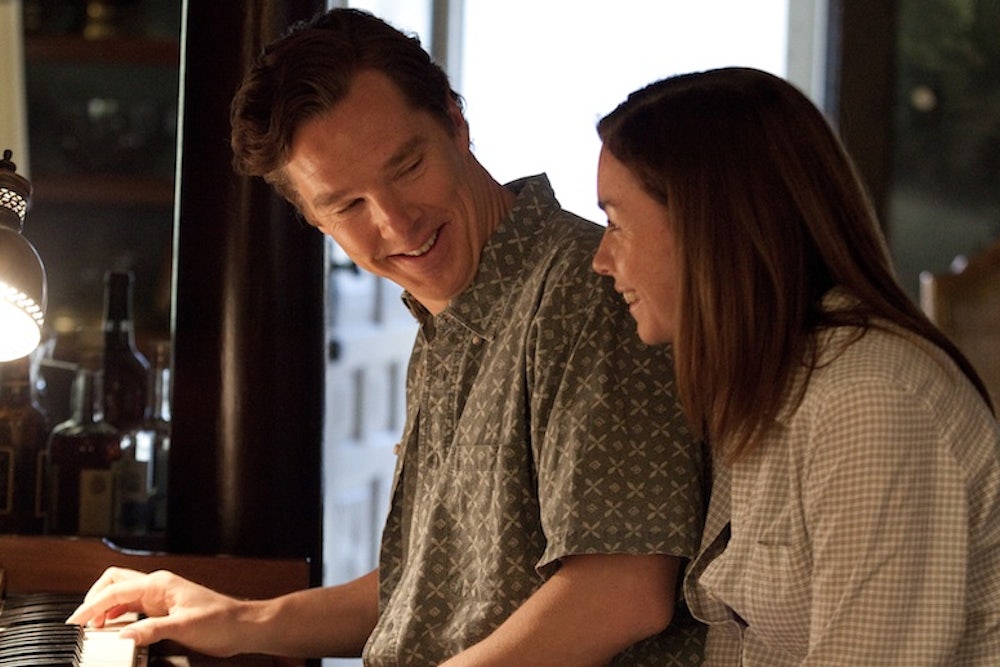Whether or not Meryl Streep deserves to win Best Actress for her turn as the deranged matriarch in August: Osage County is up for debate, but everyone who’s seen Tracy Letts’s play or the film adaptation should be able to agree on at least one thing: It makes for some uncomfortable viewing. And of all the disturbing elements that make up this saga—alcoholism, suicide, adultery—there’s one plotline that stands out as truly disturbing: the incestuous romance between Ivy and Little Charles, who believe they’re first cousins but—spoiler alert—turn out to be half-siblings. Even before the degree of their blood relationship comes to light, Charles and Ivy go to great lengths to hide their affair; when they finally tell their family, they are met, as they expected, with disgust.
Disgust seems like a pretty appropriate response to an affair between cousins, but historically, in societies around the world, marriage between cousins has been accepted and even encouraged. Is the taboo against incest a biological universal, or is it culturally derived? And if it’s a cultural construct, why is it so widespread?
Most people believe we avoid mating with our relatives because evolution primed us to avoid choosing partners that would give us unhealthy children. When Ivy’s sister, Barbara, finds out about the relationship, she advises the couple not to have kids. This risk, though, may be overstated.
“I’m not saying that it’s fine, but I think the genetic risks of incest are probably overestimated,” said Diane Paul, a professor at the University of Massachusetts Boston whose research focuses on the history of evolution and genetics. “In our paper, we collected all the studies that were available. In all the literature there are only 213 cases on reported outcomes of incest. That's not very much to base any judgment on, but it looks like the risk of a child [born of an incestuous relationship] having a serious problem in the first few years of life is between 3 and 15 percent.”
“It’s assumed it would be higher, but there’s a huge bias of ascertainment,” she explains. “If you have a baby [that’s the product of incest] with a problem, people say, ‘Oh, that’s why,’ but if the baby is healthy, no one says, ‘Look at that healthy baby’ [that’s the product of incest].”
How does that risk go up when Charles and Ivy discover they’re half-siblings? The revelation is enough to make Ivy abandon the relationship—obviously, there are moral considerations—but, according to geneticists, their kids’ risk of disease still wouldn’t be as elevated as they might expect.
“In terms of genetic distance, a half-sibling relationship is equivalent to an uncle-niece relationship or a double first cousin relationship” [double first cousins share both sets of grandparents], both of which are quite common in different societies,” says Alan Bittles, a researcher at the Centre for Comparative Genomics at Murdoch University in Australia.
“On average, the parents would have a quarter of their genes in common, inherited from a shared ancestor. It might be expected that their children would have a seven to eight percent higher risk of a serious genetic disorder than a child born to unrelated parents.” Elevated, but not astronomically—perhaps not enough to explain the incest taboo.
In 1891, Finnish philosopher Edvard Westermarck hypothesized that the disgust we feel at the idea of incest is an effect of upbringing: people who grow up together, Westermarck believed, rarely grow up to become sexually attracted to each other—even if they’re not siblings. According to this theory, the amount of disgust one relative feels at the idea of incest with another is a function of the amount of time he or she spent with the relative in the first few years of life. (The more time you spend together, the higher your degree of repulsion at the idea of incest.) Contemporary psychologists have found empirical evidence for Westermarck’s hypothesis, most famously in the case of the kibbutz. In the 1980s, anthropologist Joseph Shepher collected data on the marriage choices of 1,500 men and women raised on a kibbutz, where all children are brought up together in “peer groups”, as if they were siblings. Of all the marriages he looked at, Shepher found no pairs that were in the same peer group before the age of six.
Some of the strongest support for a social theory of incest avoidance comes from the Dravidian and Iroquois societies that traditionally prohibit marriage between so-called “parallel cousins,” but endorse—or even mandate—the union of “cross cousins.” Cross cousins are related through the parent’s opposite-sex sibling (so, your father’s sister’s children or your mother’s brother’s children); parallel cousins are related through the parent’s same-sex child (father’s brother’s children or mother’s sister’s children). From a genetic standpoint, cross cousins and parallel cousins are identical.
Our impulse towards using genetics to explain things we hold dear—like the incest taboo, and sexuality—is misguided. Being influenced by culture doesn't make something less real.
